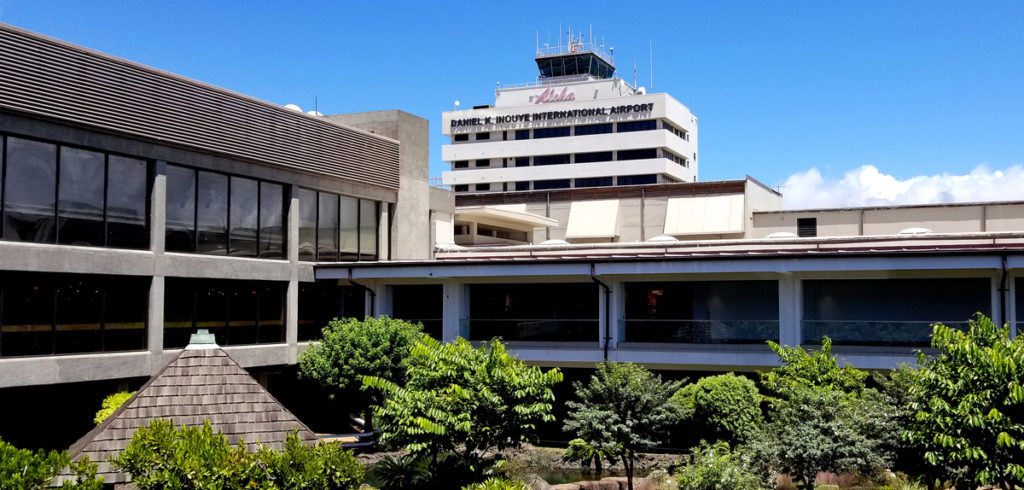Passenger Terminal Today spoke to Harleen McLean, biophilic design director, about what biophilic design means and why it is important.
Airports are sealed, secure boxes designed to make it hard for terrorist attacks. I grew up in Kenya, which had open spaces, huge viewing balconies, large windows where we could wave, see, and be connected. Nowadays these features have, to a large degree, been eliminated. Spaces such as airports have become functional and soulless, due to security requirements and the vast numbers of people traveling.
In his 1984 book Biophilia, E O Wilson’s interpretation of biophilia includes the proposition that there is a partly genetic basis for humans’ positive responsiveness to nature. There are certain health-related responses associated with viewing natural landscapes dominated by vegetation, water or natural content. Thus, the idea of lateral planted walls, skylights, water features, natural sounds and natural lighting.
Not only are biophilic elements vital to people’s well-being, but we are now seeing what happens when they are missing, with people left highly stressed, tired, poorly focused and perhaps even volatile.
What impact might biophilic design have, for instance among passengers and staff?
Given that the major issue in airports is the concept of ‘threat’, creating unthreatening natural landscapes is key – through curved shapes, restorative lighting, soft natural materials and the sounds of nature, for instance oceans and water.
In 2014, writing in the International Journal of Architectural Research, Catherine Ryan and her co-authors described how research in the neurosciences, endocrinology and other fields have scientifically validated the positive psychophysiological and cognitive benefits afforded by biophilia in design interventions.
New research supports the measurable, positive impacts of biophilic design on human health, strengthening the empirical evidence for the human-nature connection and raising its priority level within both design research and design practice.
In 2015, in The Practice of Biophilic Design, Stephen R Kellert and Elizabeth F Calabrese identified fundamental conditions for the effective practice of biophilic design. These include repeated and sustained engagement with nature and a focus on human adaptations to the natural world that over evolutionary time have advanced people’s health, fitness and well-being.
The conditions, as identified by Kellert and Calabrese, also include: the encouragement of an emotional attachment to particular settings and places; promotion of positive interactions between people and nature that lead to an expanded sense of relationship and responsibility for the human and natural communities; and the encouragement of mutual reinforcing, interconnected and integrated architectural and interior solutions.
As a biophilic designer, what airports do you think have ‘got it right’ and why?
Honolulu’s Daniel K Inouye International Airport, where the design enables guests, passengers and travelers to experience being in an environment that ‘takes them away’. The airport’s Chinese, Hawaiian and Japanese Gardens (above) were designed by Richard C Tongg in 1962, and show the influence of island life. Pathways, bridges and stepping stones connect the three gardens. Waterways flow between ponds and lakes to symbolize the intermingling of the cultures in Hawaii. Sculptures from various artists can also be found in the gardens, adding a cultural element to the visit.
What needs to be done to ensure that biophilic design is effective, rather than just a box-ticking exercise?
This is the big question. A lot is now being done to promote the effects of biophilia on health and well-being. Clients who want to take this approach need to ask themselves why they are doing it. Is it an attempt to attract people to a particular venue or is it just a potential talking point? Is it authentic in its approach to making people feel nurtured?
We need to be clear about what biophilic design means. Once people have a better understanding of the concept, they will be more convinced of its importance and better placed to decide whether to incorporate it into the places where they live and work.
However, when it comes to the implementation of biophilic design, little guidance exists. The theory and educational programs relevant to advancing the process that ‘joins the dots’ between sustainable design and biophilia have only just begun to evolve.
What biophilic trends do you expect to see next?
I expect airports to take the attributes of biophilia interiors into consideration when they budget their refurbishments and builds, given the scientific validation of the positive psychophysiological and cognitive benefits afforded by biophilia.
It will be a lifestyle choice. I certainly work in this way now and have seen the benefits in the spaces I have designed.


